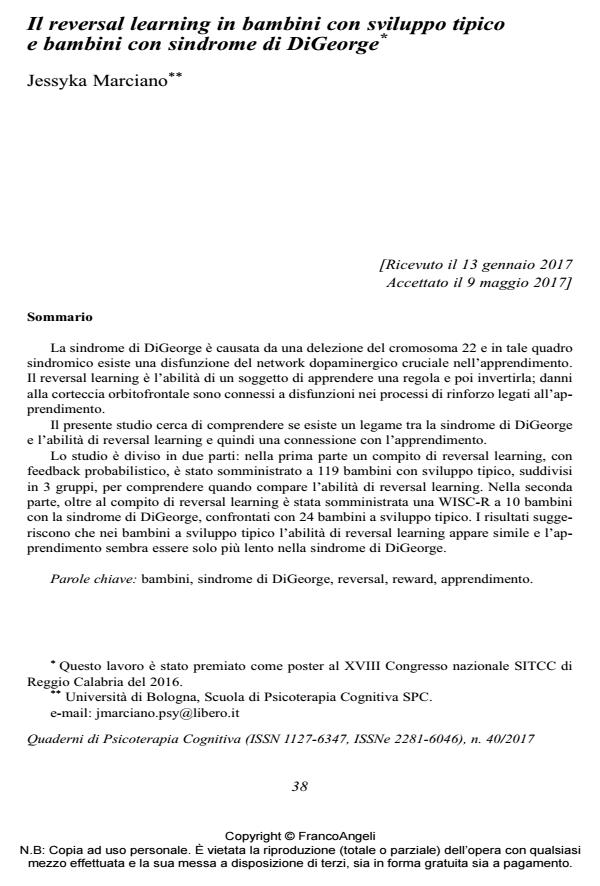Reversal learning in children with typical development and children with DiGeorge syndrome
Journal title QUADERNI DI PSICOTERAPIA COGNITIVA
Author/s Jessyka Marciano
Publishing Year 2017 Issue 2017/40
Language Italian Pages 18 P. 38-55 File size 143 KB
DOI 10.3280/QPC2017-040003
DOI is like a bar code for intellectual property: to have more infomation
click here
Below, you can see the article first page
If you want to buy this article in PDF format, you can do it, following the instructions to buy download credits

FrancoAngeli is member of Publishers International Linking Association, Inc (PILA), a not-for-profit association which run the CrossRef service enabling links to and from online scholarly content.
DiGeorge Syndrome is caused by a deletion of 22 chromosome and in this syndromic framework there is an impairment of dopaminergic network crucial in learning. Reversal learning involves the adaptation of behaviour according to changes in stimulus-reward contingencies; a damage to the orbitofrontal cortex has been linked to impaired renforcement processing. The present study tries to understand if there is a link between DiGeorge Syndrome and the reversal learning ability and so a connection with learning. The study is divided into two parts. In the first part a reversal learning task with probabilistic feedback was administered to 119 children with typical development, split into 3 groups to observe when the reversal learning ability appears. In the second part, a sample of 10 children with DiGeorge Syndrome completed WISC-R in addition to the reversal learning task; they were then compared to 24 children with typical development. Results suggest that the ability of reversal learning appears similarly in children with typical development, and learning seems to be merely slower in DiGeorge Syndrome.
Keywords: Children, DiGeorge Syndrome, reversal, reward, learning.
Jessyka Marciano, Il reversal learning in bambini con sviluppo tipico e bambini con sindrome di DiGeorge in "QUADERNI DI PSICOTERAPIA COGNITIVA" 40/2017, pp 38-55, DOI: 10.3280/QPC2017-040003